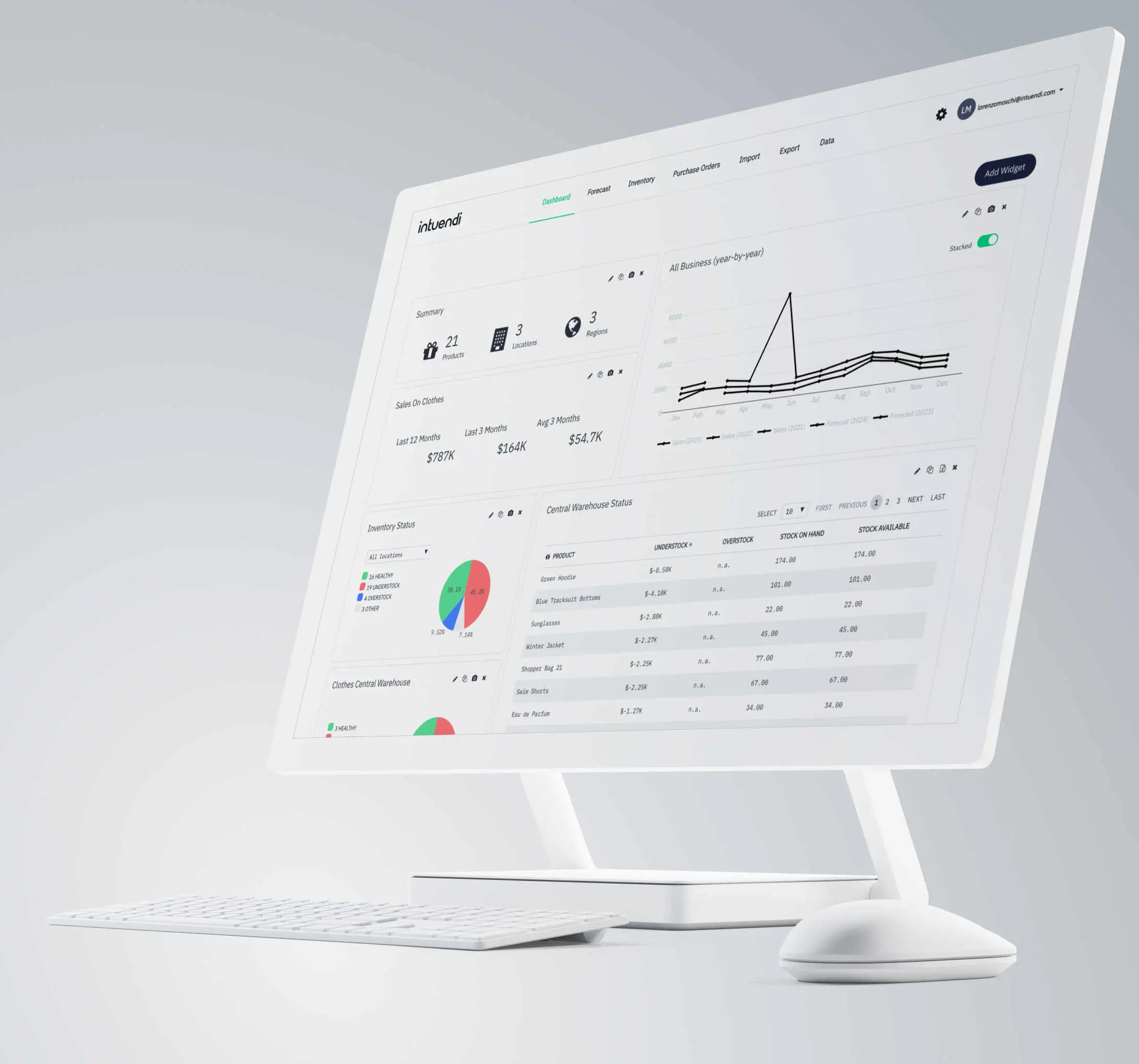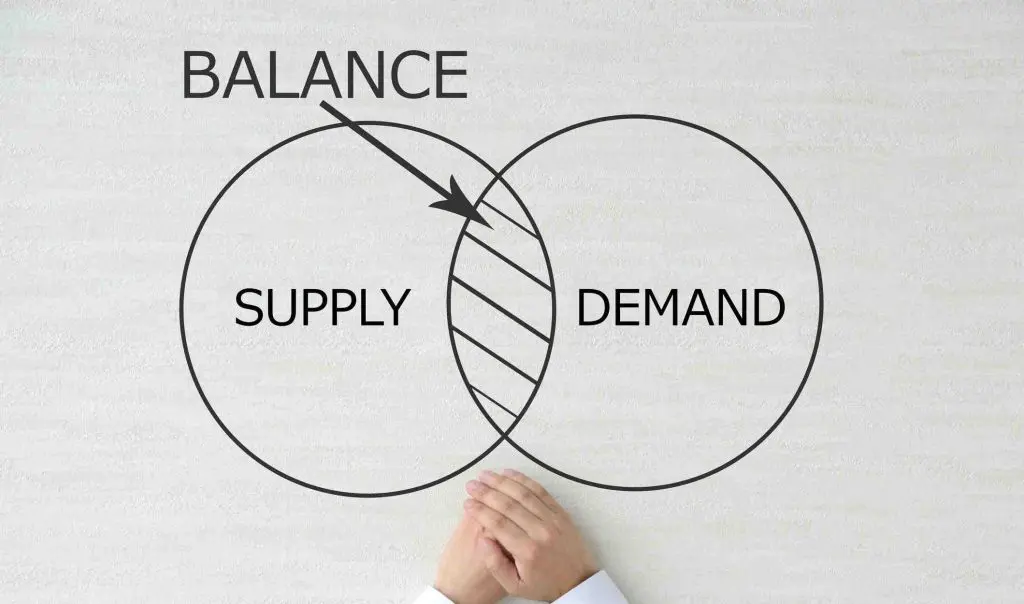Ensuring that the correct amount of inventory is available at all times, without running into over-stocking or insufficient stock issues can be quite a daunting task when not knowing where to begin. The ability to accurately predict future demand allows for a more thorough organization of inventory, giving businesses a larger opportunity to provide their customer’s needs without any setbacks or waiting situations. If you understand what will be sold, when the goods or services will be sold, the process and time for closing major deals, then, your business will continue to be profitable no matter the competition in the marketplace.
What is Demand Planning?
What is the definition of demand planning? Demand planning is a supply chain management responsibility entailing the predicting or forecasting of future demand in order to organize business operations and inventory levels in accordance with these forecasts and predictions. It is the process of managing the demand for a certain product or service. Certain procedures are heavily reliant upon the outcomes of demand planning, such as procurement activities and inventory processing.
Demand planning tools and software solutions automate and streamline demand planning activities. Intuendi specializes in AI powered demand planning software, including advanced analytics and real-time inventory visualization and data tools.

The aims of AI demand planning and automation software is to improve forecast accuracy, optimize inventory levels, enhance collaboration, and achieve operational efficiency by leveraging technology, advanced algorithms, and data-driven insights.
The Demand Planning Process
Demand planning is reliant upon the findings brought about during demand forecasting, which uses historical data and market trends for its calculations. However, the demand planning process runs much deeper than just demand forecasting, as the iterative nature of demand planning calls for the constant monitoring and revision of each step. Adjustments are also often made to more accurately meet current market dynamics and feedback. Let us take a look at the different steps one might find within the demand planning process.
- Data Collection: The first step in demand planning is the collection of relevant data. This data is inclusive of historical sales data, customer orders, market trends, promotional activities, and any other data sources that might provide insights into customer demand. One should always ensure that the data collection process remains systematic and accurate to ensure reliable forecasting.
- Analysis: Once the data is collected, it needs to be analyzed to identify patterns, trends, and seasonality in customer demand. Various statistical and analytical techniques can be employed to gain insights from the data. This analysis helps in understanding historical demand patterns and identifying factors that influence these fluctuations.
- Forecasting Techniques: Based on the analysis of historical data and market trends, forecasting is a critical step in demand planning, applying special techniques to predict future demand. These techniques range from statistical models to time series analysis, from regression analysis to machine learning algorithms. The general goal of demand forecasting is to estimate future demand quantities accurately so as to not run into any issues of over or understocking.
- Collaboration with stakeholders: However, demand planning is not solely based on numbers and analysis – it also needs to take the very real human element of sales into consideration. This can take place in the form of collaboration with stakeholders, often occurring across various departments. Collaboration helps with gathering valuable input from the sales, marketing, production, and finance teams. By involving stakeholders, organizations can incorporate their domain knowledge, market insight, and qualitative information to refine demand forecasts.
What are the Elements of Demand Planning?
There are various elements in the demand planning process that play a crucial role in ensuring accurate forecasts and efficient supply chain operations. Here is a general assessment of how each element plays its role in the demand planning process:
Historical Data Analysis: As steps 1 and 2 of the demand planning process explain, analyzing historical data takes into account all relevant data in sales and demand forecasting. This allows companies to gauge the demand patterns for different products and services over time. Additionally, factors affecting demand fluctuations, such as seasonality, promotions, or economic conditions can also be accounted for, as the analysis of historical data may help in understanding and predicting these elements in a more in-depth fashion. Ultimately, the main goal of historical data analysis is to help establish a baseline for forecasting future demand accurately.

Market Research: Demand planning calls for a thorough understanding of the current market, consumer trends, and preferences. The research phase entails gathering this information to form a stronger grasp on the broader market dynamics and external factors that may impact demand. Market research provides valuable insights allowing organizations to anticipate shifts in demand and adjust their strategies accordingly.
Demand Forecasting Methods: Using statistical models, time series analysis, regression analysis, and machine learning algorithms, AI demand forecasting helps predict future demand. The chosen forecasting method depends on the nature of the product or service, the available data, and the level of accuracy required. Accurate demand forecasts are essential for inventory management, production planning, and resource allocation.
Inventory Management: Based on the demand forecasts, companies are able to optimize their inventory levels to meet customer demand, while preventing situations of stock-outs or excess inventory. Allowing for the saving of many unnecessary costs, such as holding fees, spoilage and wastage, aligning inventory levels with anticipated demand is a crucial factor of the demand planning process, allowing the maintenance of balance between supply and demand.
Demand Planning Benefits with Intuendi
Ever-changing customer demands are volatile and even harder to deal with when you do not have demand planning and forecasting software like Intuendi. When you can actually forecast customer demand, it becomes infinitely more difficult. In a supply chain scenario, demand planning and forecasting is key that helps keep the business together, to function and keep your customers happy. Here is a comprehensive list of some of the benefits your company can enjoy when adopting Intuendi’s demand planning software.
1. Improved in-stock availability-all season ready stock
2. Better view of demand swings that you can use in building more effective marketing strategies.
3. Cohesive, seamless relationship between all tiers of the supply chain, leading to greater visibility of processes.
4. Better revenue, through fewer stock-outs and improved customer service levels.
5. Reduced overstock and wastage of stock.
6. A framework and infrastructure to adapt to regular market changes.
7. Better inventory assortment and allocation across all stores and channels.
8. Improved productivity across all tiers of supply chain.
Demand Planning Challenges
To reap the benefits of demand planning tools and software, it is necessary to be aware of the most frequent challenges companies face when their demand planning is not entirely up to scratch.
Customers Demand Circle: Most entrepreneurs lose their customers to the competition because of stockouts or lack of manpower to deliver the required services at the right time. If you have a clear understanding of your customer’s demand, it will help improve their loyalty over time, which can sustain your business success. With demand forecasting, you can identify future changes in the market and take proactive actions to maintain an exceptional standard.
Demand Overestimation: This can lead to huge losses when it occurs rapidly in a company. The unsold items will cause ‘cash trapping’ to your company. You may not have the cash to order for new products, and customers may begin to have the impression that your goods are obsolete and this will dramatically reduce sales.
Not keeping up with Change in Technology: Technological change and its impact on the company’s products and services are key factors that can work against the success of the company. Stagnating will eventually cause your company to downsize, as in the instance of Nokia. You need to be dynamic and develop the ability to accept change. Being flexible in business will help you understand that you cannot operate your business in a vacuum.
Determination of Cash Flow Projections: Calculating an accurate cash flow projection is one of the most fundamental aspects of good business financial management and planning. This sustains small businesses as the majority do not have cash reserves to sustain themselves through sales and cash flow challenges. With knowledge of cash flow projections, small businesses can prepare themselves for future cash flow crises. Forecasting cash flow will help you as a business owner to manage expenditures and remain viable as income slows down. Additionally, relationships with your ever-important top customers will be maintained!
Demand Planning in Supply Chain Management
How well the demand is planned for dictates how optimized the supply chain of inventory is managed, therefore creating an interdependent relationship between the two. As explained before, managing inventory in accordance with the forecasted demand helps ensure that the right amount of stock is available at the right time, without exposing your company to any excess costs and fees. This ultimately leads to improved cash flow and cost savings. Additionally, having the correct amount of inventory on-hand that meets customer demand increases overall customer satisfaction, as quick and efficient delivery is more attainable.
Demand planning also directly affects the production planning of the procurement of raw materials, the production schedule, and the manufacturing capacities. This can be further optimized by planning in accordance with suppliers, saving a culmination of costs from reducing supply chain risks to faster lead times. At the same time, transportation can also be planned in advance, allowing for the organization of transportation requirements, shipment volumes, and appropriate transportation modes. A quicker, and more efficient management of the supply chain that is established early based on the feedback provided by the demand planning phase helps prevent issues, and ultimately, saves on many unnecessary costs.
Sustainable Demand Planning
It is no secret that business functions have a significant impact on the condition of the environment. In light of this issue and rising ecological concerns, many companies are adopting more eco-conscious and sustainable practices. Pollution and waste produced by businesses are consequential and put the planet at risk, challenging the liveable conditions for future generations to come. Additionally, more business owners are observing significant benefits as they adapt to become more sustainable in their operations.
Companies can incorporate practices such as reducing waste, gas emissions, water consumption, and non-recyclable materials. Numerous benefits come from Green Supply Chain Management, and by taking on this kind of management, businesses are taking sustainable action in different areas that impact the environment. Below are a few ways in which green initiatives benefit the overall functioning of businesses.
By practicing sustainable supply chain management, businesses can reduce the excessive waste they create from production, packaging, and overstock. Beginning with better warehouse management and demand planning creates a strong need for more accurate plans and demand forecasts. The goal is to mitigate over-purchasing products, especially products with a short shelf life, such as raw materials or products that take up a lot of space in the warehouse, such as furniture. Overall, minimizing overstock regardless of the product is better to reduce investment losses and overstock, leading to waste.
Purchase orders (POs) are created based on a demand prediction. However, when the forecast is measured incorrectly as a result of insufficient or outdated demand planning tools, businesses tend to over-purchase stock to avoid stockout situations, where the excess inventory becomes waste. Companies need to develop better planning in order to generate a more accurate demand forecast to calculate what products they need to order, how much the customers will actually purchase, and when. With a more precise plan and forecast, preventing overstock and excess waste is possible.
Here are some ways in which to implement green initiatives within your company:
Reducing Gas Emissions: A substantial contributing factor to climate change is purchasing orders from overseas, which require ships to travel to and from the supplier. If every company changed their approach to purchasing orders, fewer ships and trips would be necessary, which would lead to fewer emissions. Container optimization effectively reduces over-purchasing and buying unnecessarily too often, not to mention that shipping delays can be avoided as demand planning software considers this as a major factor when processing data. Stockholm Environment Institute reports, “emissions from maritime shipping have been largely overlooked in discussions on climate mitigation.” The impact, while it is commonly overlooked, is massive and continues at an aggressive rate. “Maritime shipping generated an estimated 1 billion tons of greenhouse gases (CO2-equivalent) per year in 2007–2012,” and at this rate, “maritime shipping emissions are forecast to rise between 35% and 210% by 2050.” The impact from the current rate and future prediction could be irreversible, which is all the more reason gas emissions can no longer be a neglected matter.
Favorability & Customer Satisfaction: Adopting sustainable methods also means pleasing customers and gaining their favorability. Forbes reports a study performed on 1,000 people that revealed “87% would buy a product with a social and environmental benefit if given the opportunity,” additionally, they state, “Customers are becoming better informed and more aware of the environmental impact of consumer products. Thus, they are demanding that industry improves the environmental performance of its products.” Because customers prefer and expect companies to make a sustainable effort, when this is implemented, the rate of sales and interest from customers increases.
Employee Motivation: A recent study conducted by researchers at UCLA found that “Employees in such green firms are more motivated, receive more training, and benefit from better interpersonal relationships. The employees at green companies are therefore more productive than employees in more conventional firms.” Employees will feel more compelled to stay on task and with initiative. This helps teams and departments work both individually and together with more purpose and productivity, which can only benefit business performance and goals.
Increased ROI: A more accurate demand forecast permits businesses to purchase what customers will buy – causing increased sales and reduced spending on ill-performing products, helping save on investments. Additionally, by purchasing the products that will sell, companies can avoid stockouts, allowing the availability of best sellers at all times. This brings increased sales and profit margins. I
Time Saved: Using a demand planning cloud-based platform powered by AI technology provides insights to data instantly. The time it takes to perform tasks to generate a purchase order is reduced tremendously. Time is minimized because it’s possible to “manage your locations, assess your inventory needs, create your POs and send them to your suppliers with just a few clicks” when using a demand planning platform.By simply preparing purchase orders in a more efficient and timely manner, businesses can easily reduce the number of shipments they receive, increase the return on investment, gain customer favorability, and keep employees motivated.
Why Demand Planning is Important in Supply Chian
Demand planning is crucial for businesses on all levels, as it allows them to accurately forecast customer demand for products and services, and plan production activities and inventory management accordingly. This leads to reduced costs, improved customer service, and enhanced overall operational efficiency. Demand planning helps businesses avoid stock-outs, minimize excess inventory, align resources, and make informed decisions to meet customer demands while maximizing profitability.
Learn more about the power of AI Demand Planning:






